
What Are Solar Panels?How Do Solar Panels Work?Types of Solar PanelsBest Solar Panels For UK HomesSolar Energy Information Before You InstallSolar Panel Installation & MaintenanceSolar Panel Installation TypesHow Do Solar Installations Work?Solar Panels UK Cost and Prices 2024How Much Can You Save with Solar Panels?Government Grants & Schemes For Solar PanelsFinding a Solar Panel InstallerSolar Panels FAQ
What Are Solar Panels?How Do Solar Panels Work?Types of Solar PanelsBest Solar Panels For UK HomesSolar Energy Information Before You InstallSolar Panel Installation & MaintenanceSolar Panel Installation TypesHow Do Solar Installations Work?Solar Panels UK Cost and Prices 2024How Much Can You Save with Solar Panels?Government Grants & Schemes For Solar PanelsFinding a Solar Panel InstallerSolar Panels FAQ
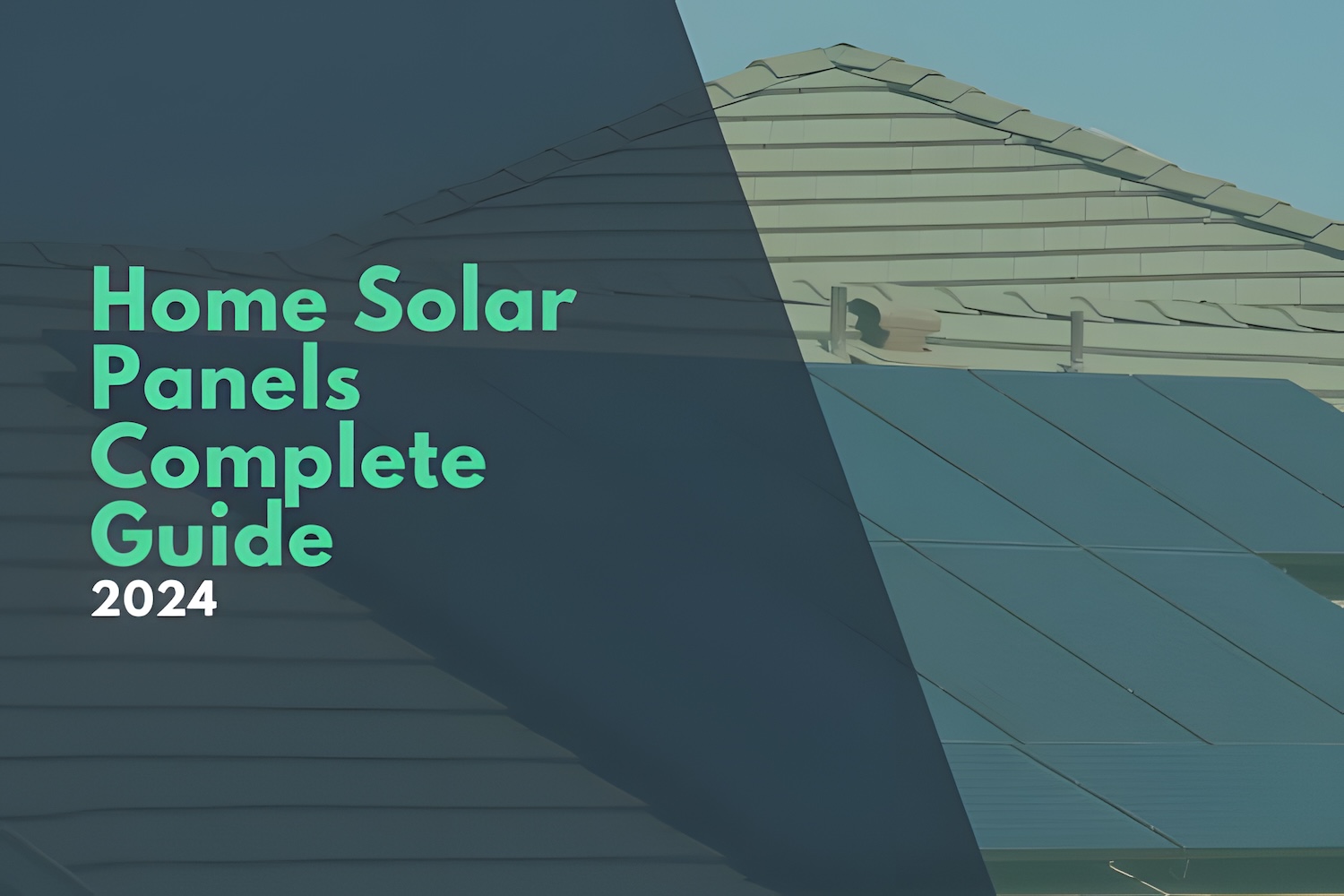
Welcome to our comprehensive Solar Panel Guide, the essential resource for homeowners considering the switch to solar energy. As the UK strides towards a greener future, understanding the intricacies of solar technology has never been more important. In this guide, we'll illuminate every aspect of solar panels, starting with the basics of What Are Solar Panels? and How Do Solar Panels Work?, to give you a solid foundation in solar energy.
We'll delve into the Types of Solar Panels available, and help you identify the Best Solar Panels For UK Homes, tailored to the unique climate and conditions of the region. Before you take the plunge, we'll arm you with critical Solar Energy Information Before You Install, ensuring you're well-informed and ready to make decisions.
The practicalities of Solar Panel Installation & Maintenance are key to a successful solar experience, as are the various Solar Panel Installation Types. We'll guide you through How Do Solar Installations Work? to demystify the process from start to finish.
Understanding the financial aspect is crucial, so we'll break down Solar Panels UK Cost and Prices 2024, and reveal just How Much You Can Save with Solar Panels. Moreover, we'll navigate the Government Grants & Schemes For Solar Panels that can make solar more affordable.
Finally, we'll assist you in Finding a Solar Panel Installer and answer your pressing questions in our Solar Panels FAQ. Whether you're a solar novice or looking to expand your existing setup, this guide is your first step towards a brighter, more sustainable home.
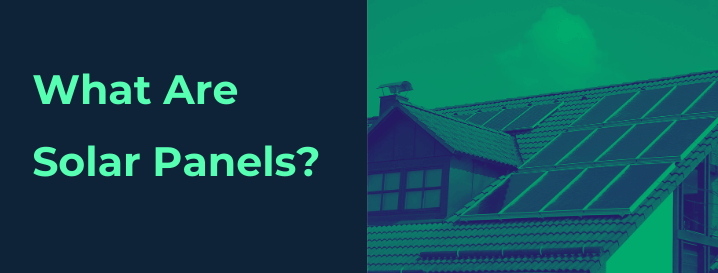
Solar panels, also known as photovoltaic (PV) panels, are devices that convert sunlight into electricity. They are made up of solar cells, which absorb photons from sunlight and generate an electric current.
They're specially designed to soak up sunlight and turn it into electricity for your home. Imagine a bunch of tiny sponges on your roof, soaking up all that lovely sunlight and converting it into power.
It's all thanks to something called photovoltaic (PV) technology. And the best part? They work throughout the day, every day, to provide a constant stream of clean, green energy. This can help you cut down your energy bills, reduce your carbon footprint, and make your home a little bit greener.

Solar panels work by generating electricity through the photovoltaic effect. The solar panels contain solar cells made from semiconductor materials such as silicon.
When sunlight shines on these solar cells, the energy causes electrons to be released and flow through the material to produce a DC electric current.
Ever wondered how solar panels turn sunlight into electricity?
Harnessing the Sun: Solar panels are equipped with solar cells made from materials like silicon. When sunlight hits these cells, it kicks off a process called the photovoltaic effect.
Creating the Current: This sunlight energy stirs up the electrons in the solar cells, causing them to start moving and create a direct current (DC) of electricity.
Collecting the Juice: Inside the solar panels, there are wires that gather this electricity. They're like the solar panel's personal power collectors.
Inverting the Power: The collected DC power can't be used directly in your home. That's where an inverter comes in. It converts the DC power into alternating current (AC) power, so it's ready to use in your home.
Maximising the Sun's Power: The solar panels are mounted at specific angles on your roof to get the most sun exposure throughout the day. The more intense the sunlight, the more electricity your panels can produce. It's clean, renewable solar energy at its best.
"When the sun shines onto a solar panel, energy from the sunlight is absorbed by the PV cells in the panel. This energy creates electrical charges that move in response to an internal electrical field in the cell, causing electricity to flow."
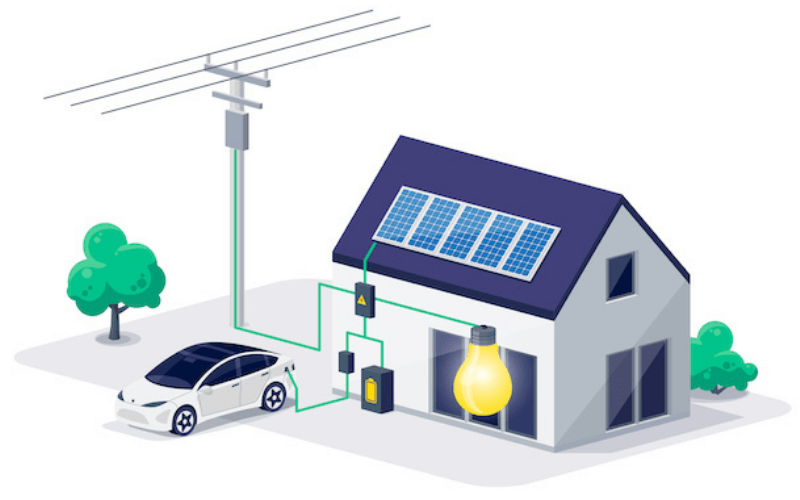
Soaking up the Sun: Solar panels, installed on your rooftop or ground, are like sun sponges. They soak up sunlight and convert it into direct current (DC) electricity.
From DC to AC: The DC power then travels to an inverter, usually mounted near your home's electrical panel. Here, the magic happens. The inverter transforms the DC current into alternating current (AC) electricity, the kind you can use to power your home.
Balancing the Power: Here's the clever part. If your solar panel kit generates more electricity than your home needs, the surplus is sent back to the grid. If they don't produce enough, don't worry – your home can draw extra power from the grid.
Tracking the Energy: A meter keeps an eye on your solar electricity usage, as well as any grid power you consume. It's your personal energy accountant, keeping tabs on your consumption.
Maximising Solar Power: Your solar panels are strategically oriented towards the sun to optimise production throughout the day. This system ensures you have a steady supply of clean, renewable electricity to power your home.
So, you see, adding solar panels to your home is like having your own mini power station. You're generating electricity, reducing your energy bills, and helping to lower your carbon footprint. Plus, with the UK government's Smart Export Guarantee, you could even make money by selling your excess electricity back to the grid.
Parts of a Solar PV SystemA solar photovoltaic (PV) system installed on a house in the UK is made up of several key components.
Imagine having the power to turn sunshine into electricity. Sounds like magic, right? Well, that's exactly what your home solar panel kits do every day. Let's take a peek under the glass cover to understand how it works:
Meet the Photovoltaics: Inside each solar panel, you'll find special cells called photovoltaics. These are made of a semiconductor material, usually silicon, that's really good at absorbing sunlight.
Sunshine Sparks Action: When sunlight hits a photovoltaic cell, it's like a wake-up call for the electrons in the silicon. The energy from the sunlight gets absorbed by these electrons, which then get knocked loose and start moving around.
The Electric Dance: Here's where it gets interesting. Each cell has one layer packed with extra electrons (the negative side) and one layer that's a bit short on electrons (the positive side). This imbalance creates an electric field, sort of like an invisible push, that directs the loose electrons. This movement of electrons is what we call electricity.
Teamwork Makes the Dream Work: A single cell can't do much on its own, so lots of these cells are wired together and housed between a protective glass cover and a sturdy backing. The result? A complete solar panel kit ready to generate electricity for your home.
Maximising Efficiency: To squeeze the most power out of the sun, these cells work best when they're pointed directly at the sun. The type of silicon and the cell design also play a role in how efficient they are at converting sunlight to power.
So, there you have it, a sneak peek into the fascinating world inside your solar panels!
"Solar cell, also called photovoltaic cell, any device that directly converts the energy of light into electrical energy through the photovoltaic effect."
When it comes to your solar panel system, the panels themselves often steal the limelight. But there's another key player that deserves recognition: the inverter. This helpful device is like a translator, helping your solar energy speak the same language as your home's electrical system.
Two Types of Current: Your solar panels are hard at work capturing sunlight and transforming it into electricity - specifically, direct current (DC) electricity. Now, DC electricity is great, but it's a bit like a one-way street: electrons can only flow in one direction.
The Switch Up: Your home, on the other hand, needs alternating current (AC) electricity to power everything from your fridge to your phone charger. With AC, electrons have the freedom to switch direction back and forth.
The Translator: Enter the inverter. It takes the DC power flowing from your solar panels and turns it into the AC power your home needs. In other words, it makes sure your solar electricity can run all your household devices.
The Bottom Line: Without the inverter, your solar panel system and your home's electrical system would be like two people trying to converse in different languages. The inverter makes sure they're both on the same page.
So, the next time you're enjoying the benefits of your solar energy - whether that's saving on your electricity bills or reducing your carbon footprint - don't forget to give a nod to your inverter. It's the unsung hero making it all possible!
"A solar inverter is an electrical converter which changes the direct current (DC) electricity captured by solar panels, into alternating current (AC), which is the standard flow of electricity required for electrical circuits and domestic appliances." (HIES Scheme)
Imagine this: it's a sunny day in the UK, and your solar panels are busily soaking up all that free energy from the sun. But wait, your home can't use all that electricity right now. So, what happens to the excess? That's where solar batteries come to the rescue. They're the secret weapon in your solar panel system, helping you keep hold of that precious, renewable solar energy.
Sunshine Bank: Think of solar batteries as your personal energy bank. During those sunny spells when your solar panels are generating more electricity than your home needs, the extra power is stored in the batteries.
24/7 Solar Power: Solar batteries mean you're not just a daytime solar power user. Even when the sun has set or hidden behind clouds, you can still use the electricity that's been stashed away in your batteries.
Maximise your Solar Benefit: By adding batteries to your solar panel system, you're ensuring no drop of solar power goes to waste. You're making the most of the sun's free energy, reducing your electricity bills and carbon footprint even more.
The Best of the Bunch: Lithium-Ion Batteries: When it comes to solar storage, lithium-ion batteries are a popular choice. These compact powerhouses connect to your solar controller and inverter, balancing the flow of power between the panels, batteries, and your home.
So, with solar batteries in your arsenal, you're not just installing solar panels, you're installing a round-the-clock solar power system. You're capturing sunshine for later use, saving money, and making a positive impact on the environment. Now, that's a bright idea!
"Battery storage technologies are essential to speeding up the replacement of fossil fuels with renewable energy. Battery storage systems will play an increasingly pivotal role between green energy supplies and responding to electricity demands." National Grid

When it comes to installing solar on your home, not all panels are created equal. In fact, there are several different types of solar panels used in photovoltaic systems across the UK, and each one has its own strengths and quirks.
The type of solar panel you choose for your installation can make a real difference to how much usable energy you get from the sunlight in your area. Whether you've got a sprawling roof space or a cosy little corner, there's a panel out there that's just right for you.
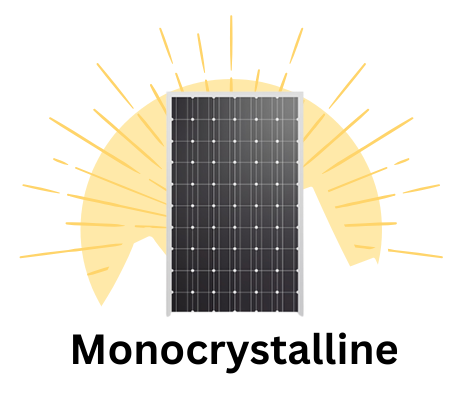
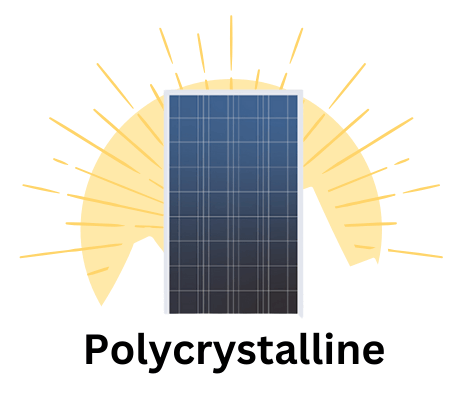
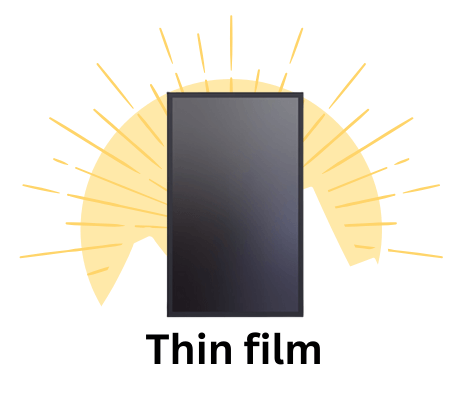
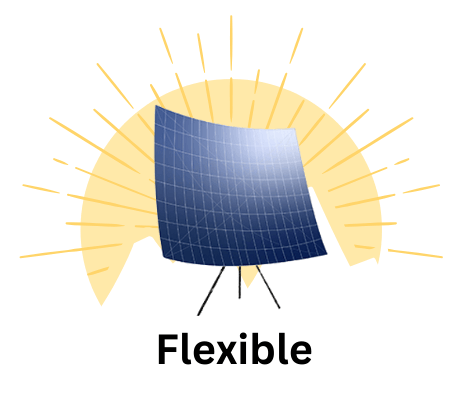
"A solar cell (also called photovoltaic cell or photoelectric cell) is a solid state electrical device that converts the energy of light directly into electricity by the photovoltaic effect, which is a physical and chemical phenomenon." Wikipedia
Monocrystalline panels are made from a single crystal of silicon, making them the most efficient. Recognisable by their dark colour and rounded corners.
Polycrystalline panels are formed from multiple silicon crystal fragments, so are slightly less efficient. They have a speckled blue appearance.
Thin-film panels are fabricated by depositing thin layers of photovoltaic material onto substrates. The least efficient but cheapest option.
Bifacial panels can absorb sunlight on both front and rear surfaces. They posess a higher energy yield but are more expensive.
Flexible panels are manufactured with thin-film cells on flexible plastic substrates. They can adapt to curved surfaces.
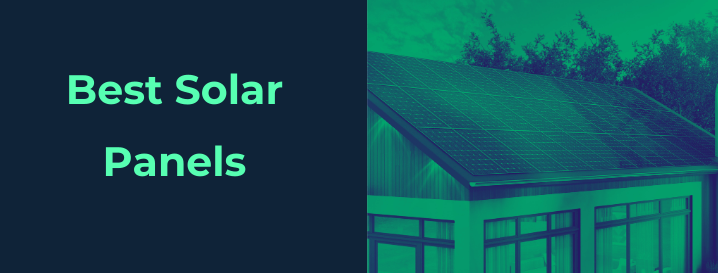
So, you're ready to take the plunge into the bright world of solar energy – fantastic! But with an array of great solar panels to pick from in the UK, how do you find 'the one'?
Panel Efficiency: Think of this as how well a solar panel converts sunlight into electricity. Higher efficiency means more bang for your buck from each ray of sunshine.
Temperature Ratings: Solar panels love sunlight, but too much heat can actually make them less effective. Panels with good temperature ratings can keep their cool even on a hot summer's day.
Degradation Rates: Over time, solar panels can lose a bit of their sparkle – this is known as degradation. The lower the rate, the longer your panels will perform at their best.
Product and Performance Warranties: These provide peace of mind that your panels will last and perform as expected. Look for a long warranty from a reputable brand.
Cost Per Watt: This is the price tag of the panel divided by its capacity. It's a great way to compare the cost-effectiveness of different panels.
| Brand | Model | Power | Efficiency | Warranty | Price/Watt | Panel Price |
|---|---|---|---|---|---|---|
| Perlight | N-Type | 430W | 22.8.0% | 30 years product, 30 years 87.4% performance | £0.52 | £225 |
| Perlight | Delta | 415W | 21.2% | 30 years product, 30 years 82.05% performance | £0.43 | £180 |
| Trina Solar | Vertex S | 405W | 21.0% | 25 years product, 30 years 87.6% performance | £0.49 | £225 |
| SunPower | Maxeon 3 | 400W | 21.2% | 25 years product, 30 years 92% performance | £0.65 | £290 |
| LG | NeON R Prime | 365W | 21.1% | 25 years product, 30 years 85% performance | £0.58 | £250 |
| JA Solar | DeepBlue 3.0 | 430W | 21.0% | 15 years product, 30 years 87% performance | £0.44 | £220 |
| Q Cells | Q.Peak Duo L-G5.2 | 340W | 19.4% | 25 years product, 30 years 87% performance | £0.47 | £180 |
| Jinko | Eagle 72M | 455W | 20.8% | 15 years product, 30 years 87.2% performance | £0.41 | £210 |
| Canadian Solar | HiDM5 | 410W | 20.6% | 15 years product, 30 years 87.2% performance | £0.43 | £195 |
| Longi Solar | LR5-72HPH | 435W | 19.9% | 15 years product, 30 years 87.5% performance | £0.42 | £210 |
Ranking based on Efficiency, warranty and price per panel. Data used collated from manufacturer datasheets and is correct at time of publishing (02/11/23). Data will be checked and verified every 6 months.
Key factors that contribute to high efficiency include the silicon cell structure, with monocrystalline being the most efficient, as well as advanced cell technologies like heterojunction and tunnel oxide passivated contacts.
While highly efficient panels tend to be more expensive, they can generate more power per square foot and may be a good choice where space is limited.
Going with a high efficiency panel enables homeowners to maximise the power output of their solar array.
| Brand | Model | Efficiency | Cell Type | Power | Warranty | Price/Watt | Price Per Panel |
|---|---|---|---|---|---|---|---|
| Perlight | N-Type | 22.8% | Monocrystalline silicon | 430W | 30 years product, 87.4% performance in 30 years | £0.52 | £225 |
| Perlight | Delta | 21.2% | Monocrystalline silicon | 415W | 30 years product, 82.05% performance in 30 years | £0.43 | £180 |
| SunPower | Maxeon 5 | 22.8% | IBC monocrystalline silicon | 400W | 25 years product, 92% performance in year 25 | £0.75 | £325 |
| SunPower | Maxeon 3 | 22.7% | IBC monocrystalline silicon | Up to 400W | 25 years product, 92% performance in year 30 | £0.65 | £280 |
| LG | NeON R Black | 22.3% | N-type monocrystalline silicon | 380W | 25 years product, 87.5% performance in year 30 | £0.62 | £255 |
| Panasonic | HIT N325 | 21.9% | Heterojunction monocrystalline silicon | 325W | 25 years product | £0.55 | £200 |
| REC | Alpha 72H | 21.7% | HJT monocrystalline silicon | 380W | 25 years product, 92% performance in year 25 | £0.58 | £240 |
| Silfab | Elite MMS | 21.7% | Bifacial monocrystalline silicon | 440W | 25 years product, 87% performance in year 30 | £0.48 | £230 |
| Jinko | Tiger Pro | 21.6% | N-type monocrystalline silicon | 545W | 12 years product, 87.6% performance in year 30 | £0.41 | £230 |
Ranking based on Efficiency, warranty and price per panel. Data used collated from manufacturer datasheets and is correct at time of publishing (02/11/23). Data will be checked and verified every 6 months.
Dreaming of switching to solar power but worried about the costs? No worries! You can still enjoy the benefits of solar energy without breaking the bank. Cheap solar panels are available to make your renewable energy dreams come true.
Manufacturers like Trina Solar, Jinko, and Canadian Solar offer some of the most affordable panels.
These panels may not be as efficient as their premium counterparts, but they're easier on the wallet, ranging from around £0.30 to £0.60 per watt. That's quite a steal compared to premium panels which can reach up to £2 per watt!
| Brand | Model | Power | Efficiency | Warranty | Price/Watt | Price Per Panel |
|---|---|---|---|---|---|---|
| Perlight | Delta | 415W | 21.2% | 30 years product, 30 years 82.05% performance | £0.43 | £180 |
| Trina Solar | Tallmax M Plus | 345W | 19.9% | 15 years product, 87% performance in 30 years | £0.34 | £135 |
| JA Solar | DeepBlue 3.0 | 340W | 21.0% | 15 years product, 85% performance in 30 years | £0.39 | £155 |
| Jinko | Eagle 72W | 455W | 20.8% | 15 years product, 87.2% performance in 30 years | £0.41 | £210 |
| Canadian Solar | HiDM5 | 410W | 20.6% | 15 years product, 87.2% performance in 30 years | £0.43 | £195 |
| Risen | RSM144-8-445 | 445W | 20.4% | 15 years product, 80% performance in 30 years | £0.33 | £147 |
| Phono Solar | PS340J-20/UH | 340W | 19.9% | 25 years product, 83.1% performance in 30 years | £0.42 | £165 |
| Suntech | STP340S-24/Wd | 340W | 19.6% | 15 years product, 83.1% performance in 30 years | £0.38 | £150 |
Ranking based on Efficiency, warranty and price per panel, customer reviews. Data used collated from manufacturer datasheets and is correct at time of publishing (02/11/23). Data will be checked and verified every 6 months.
When it comes to solar panel manufacturing, several names stand out for their quality, reliability, and innovation.
These trailblazers in the solar industry offer a wide range of products to cater to diverse needs and budgets.
| Manufacturer | Headquarters | Notable Series | Key Features |
|---|---|---|---|
| Perlight | UK | N-type, Delta | UK-based, high efficiency panels |
| Trina Solar | China | Vertex | Balance between efficiency and affordability |
| JA Solar | China | DeepBlue | High-efficiency panels, strong R&D commitment |
| SunPower | USA | Maxeon | High efficiency, robust warranty |
| LG | South Korea | NeON | High efficiency, durable, perform well in various weather conditions |
| Panasonic | Japan | HIT | High power output, excellent efficiency |
| Q Cells | Germany | Q.Peak Duo | Innovative cell technology, maximises power generation |
| REC Solar | Norway | Alpha | Eco-friendly manufacturing, high performance |
| Jinko | China | Eagle | World's largest producer, rigorous quality control |
| Canadian Solar | Canada | HiDM | Robust performance, competitive pricing |
| Longi Solar | China | LR | High-efficiency panels, strong R&D commitment |
Data collected from Trustpilot and is correct as of 01/11/23. Data will be checked and verified every 6 months.
Choosing the best panels in the UK isn't just about picking the most expensive or the one with the best ratings. It's about finding the right fit for your home, budget, and solar dreams.
The best solar panels can provide fantastic energy yield, annual savings, and a long healthy life for your residential solar system.
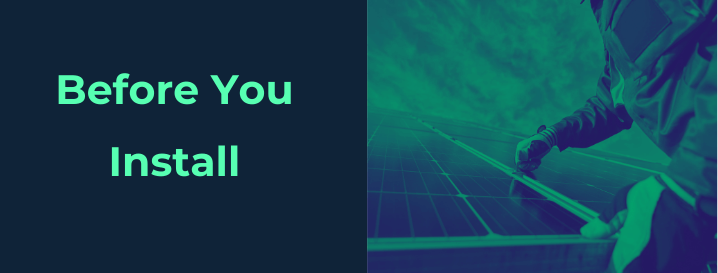
Before you install solar panels, it's important to know if your roof can effectively generate solar energy. Consider things like which way it faces, how steep it is, if anything blocks the sun, and the weather in your area.
Also, make sure you don't need any special permission or permits. Usually, you don't, but it's good to double-check.
Learn how to take care of your solar panels. Clean them regularly and be prepared to replace the inverter if needed.
To make smart, energy-saving choices, do your homework. Look up reliable solar information in the UK and talk to experts.
"If you are planning to install an energy device in your home or small business, you are required to register your energy device with your Distribution Network Operator (DNO), the company that is responsible for bringing electricity to the property where you are installing the device." Gov UK
The average home needs between 15-25 standard solar panels ranging from 250-400 watts each.
First, you'll need to figure out your home's electricity consumption, measured in kWh per year. Factors influencing this include:
Once you have your annual energy usage, divide that by the peak sun-hour production rate in your area. This will give you the size of the solar system you need, in kW. Then, divide that system size by the output of each solar panel model to figure out how many panels you'll need.
Choosing a larger solar array can help you maximise your energy offset and savings over time, especially as electric rates increase. So, installing solar isn't just good for the environment – it's also a savvy move for your wallet!
| Home Type | Annual Energy Usage | Panels Needed |
|---|---|---|
| Small (2 bed, 1 bath) | 4000 kWh | 12 |
| Medium (3 bed, 2 bath) | 6000 kWh | 18 |
| Large (4 bed, 3 bath) | 8000 kWh | 24 |
"Given my average consumption of X kWh of electricity per year, and the annual average of Y kWh/m2/day of solar insolation, [how many solar panels](/solar-advice/how-many-solar-panels) of efficiency Z percent will I need to install for my home to become energy independent?” MIT
The number of solar panels you're allowed to install in your home can be influenced by a few different factors. In the UK, there isn't a set limit on how many panels you can have, but you'll need to consider things like your roof size, local planning restrictions, and grid connection rules.
Most UK homes have enough roof space to accommodate 10-20 standard solar panels. That's enough to generate 2-5kW of power. You typically won't need planning permission for installing solar panels on domestic properties, unless they protrude excessively. However, if your home is located in a conservation area, is listed or has another protected status, there might be more regulations to comply with.
One of the main considerations when deciding on your solar pv system size is your grid export limit. For a single-phase connection, this is usually 4-5kW. If you exceed this, you might need to pay for a pricier 3-phase grid upgrade. Your solar panel installer can guide you on the rules for your specific area and roof type, helping you determine the best solar panel system size for your home.
With no hard and fast limit, UK homeowners have the flexibility to generate a great amount of solar electricity.
"The installation of solar panels and equipment on residential buildings and land may be 'permitted development' with no need to apply to the Local Planning Authority for planning permission.” Planning Portal
Most solar PV systems in UK homes are connected to the main electricity grid. This grid-tied setup allows any excess electricity generated by your solar panels to be exported back to the grid. It also means you can draw energy from the grid when your solar production might be low (like on cloudy days or overnight). You won't need much storage with this system, as the grid acts as your backup.
On the other hand, stand-alone or off-grid solar PV systems operate independently from the national grid. This means they need to meet all your energy needs on their own. How do they do this? They're usually equipped with:
A battery storage system to store excess energy for use when your solar panels aren't producing electricity.
Charge controllers to manage the power going into the batteries.
Larger solar arrays to ensure you have enough power round the clock.
Off-grid solar can work anywhere, but it's crucial to ensure you have enough solar resources (i.e., sunshine) and enough storage capacity to handle your energy usage.
So, which is better? Well, it depends on your situation. Whilst we do not offer Stand-alone PV Systems, we can help advise you on the right option for you. A grid-connected system is usually simpler and often more cost-effective if your home has access to the grid.
| System Type | Pros | Cons |
|---|---|---|
| Grid-Connected | - Sell excess electricity back to grid - Use grid as backup - Simpler, low cost - Work well in populated areas | - Rely on grid for backup - Exported power compensated at low rate - Subject to grid outages |
| Stand-Alone/Off-Grid | - True energy independence - Operate anywhere - No grid connection fees - Uninterrupted power | - Require battery banks - Higher system cost - Sized for all loads - Maintenance intensive |
In most cases, planning permission is not required to install solar panels in England and Wales. As long as panels are sited sensitively and don't protrude excessively, they can be fitted to most homes under permitted development rights.
Exceptions are if the building is listed or in a designated area like a conservation area, national park or Area of Outstanding Natural Beauty. Planning rules also differ in Scotland and Northern Ireland with more restrictions.
Even permitted development installations should follow best practices on panel size, positioning and visibility.
Full planning permission may be needed in sensitive sites or for large ground-mounted arrays.
Always check local authority rules first. But generally, UK households have good flexibility to adopt solar without lengthy planning applications.
| Statistic | Value | Source |
|---|---|---|
| Homes covered by permitted development rights for solar panels | Over 90% | Microgeneration Certification Scheme |
| Maximum protrusion beyond roof slope allowed without planning permission | 200mm | UK Planning Guidelines |
| Typical time to get planning permission decision | 8-12 weeks | UK Dept for Levelling Up, Housing & Communities |
| Solar farms above 1MW capacity needing planning permission | Over 95% | UK Solar Trade Association |
| Average size of UK domestic solar PV system | 3.5kWp | Energy Saving Trust |
| Cost to apply for planning permission | £206-£462 | UK Planning Portal |
| Applications refused planning permission for solar in 2020 | 4% | Office for National Statistics |
| Maximum solar panel height allowed on homes | No higher than roofline (excl. chimneys) | UK Permitted Development Rules |
Installing solar panels does not negatively affect home insurance in most cases.
It's important to know that your shiny new solar equipment, including the panels themselves, inverters, and mounts, aren't usually covered under standard policies. To ensure these are protected against damage and theft, you'll need to add on some extra coverage. This is known as a rider and typically only adds about 1-3% to your total annual premium.
If you're considering a larger solar system, with a greater number of panels, you'll also need to take into account firefighter access and roof load issues.
So, while insurers are generally supportive of solar installations, it's essential to ensure you have the right policy additions in place. With the correct coverage, you can look forward to the annual savings on your electricity bills that come with solar energy, without any additional insurance headaches.
So, don't let insurance worries stop you from exploring solar energy for your home.
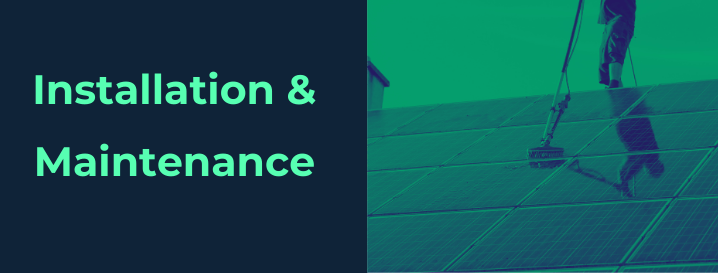
If you're considering joining the renewable energy revolution by installing solar panels for your home, you're on the right track! You could enjoy substantial savings on your energy bills per year and contribute to a cleaner environment.
But to make sure your solar PV system works efficiently for years, there are a few things you need to know about the installation process and maintenance.
Installation: A Job for the Pros
Installing solar panels is a task that requires expertise. It's best to rely on qualified solar professionals to get the job done. They will handle several important steps:
Structural assessments: They'll ensure your roof can support the weight of the panels.
Electrical work: They will ensure all the wiring is done safely and correctly.
Mounting and racking: They'll secure the panels on your roof in the right position - usually facing south in the UK for maximum sunlight.
Panel mounting and wiring: They'll connect everything up and ensure it's ready to go.
The cost of installing solar panels can vary, but it's a worthwhile investment considering the annual savings on your electricity bills.
Maintenance: Just a Little Attention
Once your panels are up and running, they require minimal maintenance. A little attention now and then can ensure they operate efficiently for many years. Here's what you need to do:
Keep 'em clean: Washing your panels to remove dirt and debris helps them absorb as much sunlight as possible.
Check connections: Regularly looking at the electrical connections can prevent potential issues in the future.
Replace damaged parts: If any parts are damaged, replace them promptly to keep your system running smoothly.
Monitor for signs of wear: Keep an eye out for any signs of wear and tear.
By following these tips, you'll ensure your solar PV system operates safely and efficiently. This way, you'll be able to enjoy the financial and environmental benefits that come with solar energy. Plus, any excess electricity your panels generate can be fed back into the National Grid under the Smart Export Guarantee, helping you save even more!
Remember, solar panels are a long-term investment. With proper installation and maintenance, most solar panels will last for years, offering you free electricity and making a significant dent in your energy bills.

Pitched roofs between 30-40 degrees are preferred over flat roofs. Nearby trees or buildings that cast shadows will reduce output. You typically need at least 40 square metres of usable roof space for a decent-sized array. Other considerations are roof age and condition, construction type, and proximity to grid connections.
You may have some questions about how to make sure your home is suitable for solar panels. Here, we'll explain it all in a friendly, jargon-free way.
A few elements determine how well your home might work with solar energy:
Orientation of your roof: If your roof faces south, it's a good news in the UK, as these roofs catch the most sunlight. But even if your roof is north facing, don't fret - there are solutions for you too.
The angle of your roof: Roofs with a pitch between 30-40 degrees are great for soaking up the sun, but solar panels can be installed on flat roofs as well.
Shade and space: Any trees or tall buildings casting shadows on your roof can reduce your panel's efficiency. And, you'll typically need at least 40 square metres of roof space for a standard solar PV system.
Other considerations: Also important are the age and condition of your roof, the type of building, and how close you are to grid connections.
You might have some restrictions if you live in a listed building or conservation area, but most homes don't need planning permission to install solar panels.
Making Solar Work for You
Even if your home doesn't tick all the 'ideal' boxes, you can still benefit from solar energy. A solar professional can assess your property and determine if it's suitable for solar panels. They'll also recommend the best system design for your home.
Remember, most UK homes have a good solar potential with the right system and placement. So, don't worry if conditions aren't perfect. You can still generate free electricity, feed excess electricity back to the National Grid, and save money on your energy bills each year.
It's important to understand how your UK location might affect your solar installation.
Where you live in the UK can bring certain factors into play when it comes to installing solar pv:
Sunlight availability: More sunlight equals more solar power. Southern England tends to get more sunlight compared to northern regions, which could mean more energy generated by your solar PV panels.
Weather conditions: Areas with frequent storms, snow, or hail might require more robust solar equipment. But remember, solar panels work efficiently across most of the UK.
Local regulations: Homes in conservation areas, national parks, or Areas of Outstanding Natural Beauty (AONB) may face more planning restrictions. The process for connecting your solar system to the National Grid can also vary by location and local council.
| Statistic | Value |
|---|---|
| Avg. solar radiation | 1,000 kWh/kW |
| Avg. solar PV system size | 3.5 kW |
| Estimated solar homes | 100,000+ |
| % of suitable roofs | 65% |
| CO2 reduction potential | 245,000 tonnes/year |
| Statistic | Value |
|---|---|
| Avg. solar radiation | 950 kWh/kW |
| Avg. system size | 3.3 kW |
| Est. solar homes | 18,000+ |
| % suitable roofs | 60% |
| CO2 reduction potential | 22,000 tonnes/year |
However, solar PV can still thrive with proper siting and system sizing. Many homes have a suitable south-facing roof.
| Statistic | Value |
|---|---|
| Avg. solar radiation | 900 kWh/kW |
| Avg. system size | 3.2 kW |
| Estimated solar homes | 15,000+ |
| % suitable roofs | 55% |
| CO2 reduction potential | 18,000 tonnes/year |
| Statistic | Value |
|---|---|
| Avg. system size | 4.2 kW |
| Solar homes goal by 2030 | 120,000 |
| Est. total capacity | 500 MW |
| CO2 reduction potential | 150,000 tonnes/year |
| Statistic | Value |
|---|---|
| Avg. system size | 3.8 kW |
| Solar homes goal by 2025 | 80,000 |
| Est. total capacity | 304 MW |
| CO2 reduction potential | 96,000 tonnes/year |
| Councils leading solar | Cornwall, Penwith, Kerrier |
| Statistic | Value |
|---|---|
| Avg. system size | 3.2 kW |
| Projected solar homes by 2030 | 260,000 |
| Estimated total capacity | 832 MW |
| CO2 reduction potential | 266,000 tonnes/year |
| Councils leading solar | Edinburgh, Glasgow, Aberdeenshire |
With its mild climate and open terrain, Wales has strong potential for solar PV adoption. Areas like Southern Wales receive plentiful sunshine to generate renewable power. However, the mountainous geography can create some shading issues.
| Statistic | Value |
|---|---|
| Avg. system size | 3.6 kW |
| Projected solar homes by 2027 | 200,000 |
| Estimated total capacity | 720 MW |
| CO2 reduction potential | 288,000 tonnes/year |
| Leading solar councils | Cardiff, Swansea, Newport |
Figuring out which direction your home faces is an important early step when assessing solar potential.
Homes oriented south get the most direct sunlight in the northern hemisphere, maximising solar production.
East and west-facing homes can also generate solar but at different times of day. Use a compass or smartphone app to determine your home's orientation.
| Direction | Solar Potential | Pros | Cons | Ideal Panel Location | Estimated Production |
|---|---|---|---|---|---|
| South | Excellent | Max sunlight exposure | Limited cons | Central/lower roof | 90-100% |
| Southeast | Very Good | Near direct sunlight | Some afternoon shading | Lower east side | 80-90% |
| Southwest | Very Good | Near direct sunlight | Some morning shading | Lower west side | 80-90% |
| East | Good | Good morning sun | Shaded in afternoon | Lower east side | 70-80% |
| West | Good | Good afternoon sun | Shaded in morning | Lower west side | 70-80% |
| North | Low | Reflected light | No direct sunlight | Lower north edge | 50-60% |
The angle or pitch of your roof also impacts how suitable it is for solar panels. Steeper south-facing roofs are ideal as they get more direct sunlight exposure. Flatter roofs can work but will produce less energy.
| Roof Pitch | Solar Potential | Pros | Cons | Panel Positioning | Est. Production |
|---|---|---|---|---|---|
| 30-45 degrees | Excellent | Optimised angle for max sun | Limited cons | Flush mounted | 90-100% |
| 20-30 degrees | Very Good | Near optimal angle | Some seasonal variance | Tilted mount | 80-90% |
| 10-20 degrees | Good | Works with adjustable mount | Suboptimal angle | Tilted mount | 70-80% |
| 0-10 degrees | Fair | Can utilise reflected light | Low angle limits direct sun | Tilted mount | 60-70% |
| > 45 degrees | Challenging | Steep pitch requires custom mounts | Excessive angle reduces winter light | Custom mounts | Varies |
The strength and structural integrity of your roof is crucial when assessing solar potential. Solar panels and racks add weight that not all roofs can handle.
| Roof Type | Strength | Solar Suitability | Notes |
|---|---|---|---|
| Pitched tile | Excellent | Ideal | Tile roofs are very strong |
| Asphalt shingle | Very good | Excellent with proper supports | May need some reinforcement |
| Flat roof | Good | Requires rigid mounting | Prone to pooling if not sloped |
| Metal | Good | Corrosion resistant but thinner gauge | Bracing often required |
| Wood shake | Fair | Not ideal for solar | Replace shakes before installing |
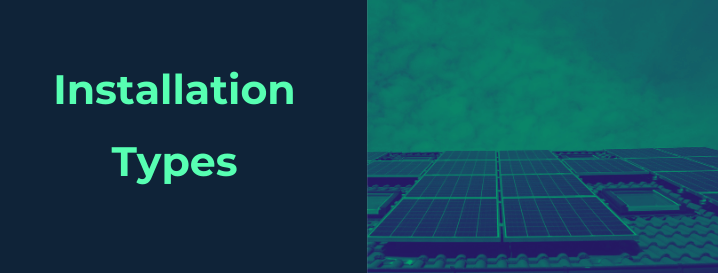
No matter the type of property you own, there's a solar installation that's right for you:
Rooftop Solar Arrays: These are your typical solar panel systems, fitted directly onto your pitched roof, either flush or tilted. If you've got a good amount of roof space, this could be a great way to make the switch to solar energy.
Ground Mounts: If you're blessed with a large garden, why not consider ground mounts? These freestanding structures can house your solar PV panels and are a perfect fit for properties with ample outdoor space.
Flat Roof Mounts: Got a flat roof? Don't worry, you can still install solar panels. Flat roof mounts use robust methods and tilted racks to fit perfectly onto your low-angle rooftop.
Large Commercial Systems: If you've got a big, open roof area on an industrial building, installing a large commercial solar system can help you maximise solar production.
Rooftop solar panel systems are fitted directly on top of pitched residential or commercial roofs. This is the most common installation method, utilising available roof space in the UK.
Installation Methods
Rooftop solar panels are mounted using rails attached to the roof rafters. Common methods:
| Method | Description | Considerations |
|---|---|---|
| Flush Mount | Lays flat on roof | Unobtrusive, suboptimal tilt |
| Tilted Mount | Angled for better exposure | More visible |
| Integrated | Solar tiles | Seamless look, costly |
Structural Factors
Rooftops must be assessed for structural integrity as panels add weight. Typical additions:
Siting and Positioning
Optimal solar rooftop location depends on:
Proper siting is critical to maximise sunlight capture.
Costs
Typical rooftop solar costs range:
Ground mounted solar panel systems are freestanding structures installed directly into the ground, typically in larger open gardens.
Installation Methods
Common ground mount installation methods:
| Method | Description | Considerations |
|---|---|---|
| Pole Mount | Vertical posts | Simple, affordable |
| Ballasted | Concrete anchors | Surface mounting |
| Trackers | Move to follow sun | Complex, high output |
Siting Considerations
Optimal location depends on:
Proper clearance from buildings and property lines is required.
Costs
Typical installed costs:
Summary
Ground mounting utilises garden space for solar access. Allows large systems. Siting, permitting and costs vary.
Flat roof solar panel systems are installed on low-angle or flat commercial rooftops using specialised mounting equipment.
Installation Methods
Common flat roof mounting techniques:
| Method | Description | Considerations |
|---|---|---|
| Ballasted | Concrete/gravel blocks | Surface mounting |
| Penetrating | Bolts into roof | Secure but alters roof |
| Tilted Racks | Angles panels | Improves sun exposure |
Structural Factors
Costs
Typical installed cost:
Summary
Flat roof solar maximises unused roof space. Robust engineering ensures secure, long-lasting mounts and waterproofing.
Commercial solar systems are large-scale arrays designed to offset major energy consumption for industrial, retail, and office buildings.
System Sizing
Typical commercial solar system size:
Adequate open roof space is required, often covering 20,000+ square feet.
Installation Methods
Common commercial solar mounting:
| Method | Description |
|---|---|
| Tilted Racks | Bolt directly into roof joists |
| Elevated Ballast | Raises panels off surface |
| Ground/Canopy | Utilises ground or carports |
Costs
Commercial solar costs:
Incentives like tax credits and accelerated depreciation can improve ROI.
Summary
Large commercial solar arrays offset substantial energy usage. Requires adequate roof space and custom engineering.
The solar panel installation process typically takes place over one day once all approvals have been completed.
Once signed off, the solar array can be officially activated and will start offsetting the building's electrical consumption. The installers can then hand off operation to the owner.
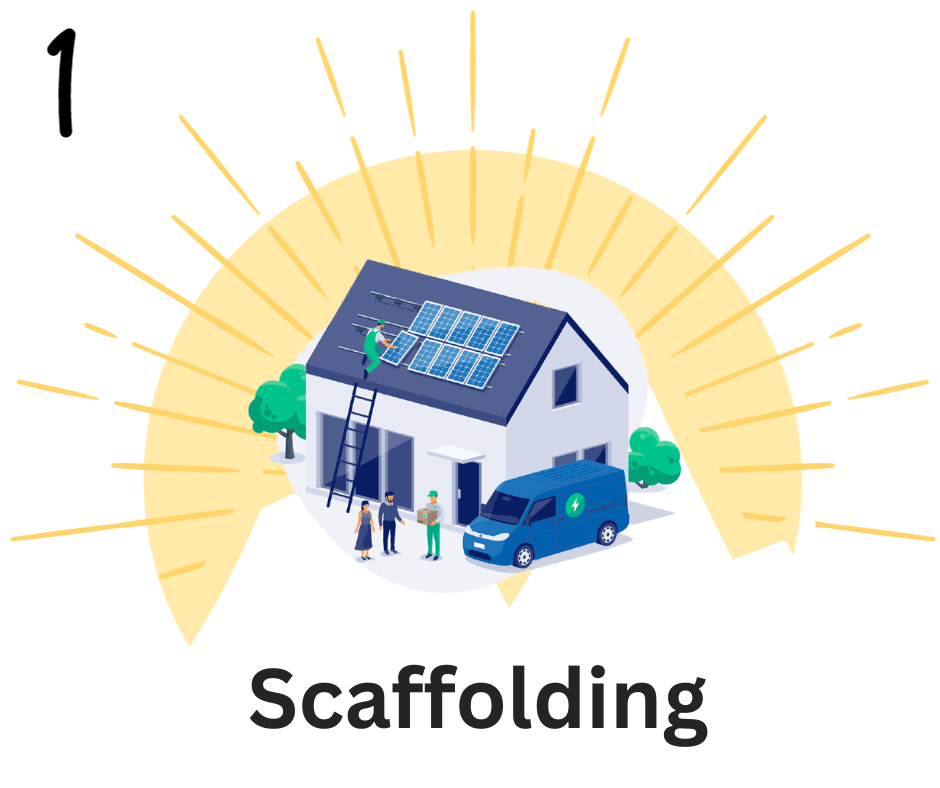
The installation team will arrive with scaffolding set up ahead of your installation day. When the installers arrive, they will layout all the system components including the panels, mounting structure, inverter, and wiring conduit.
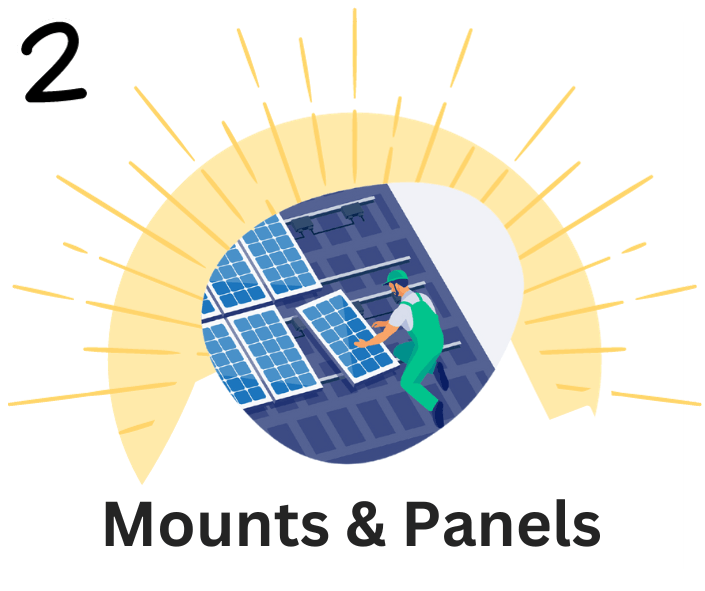
They will then mount the solar panel racks, supports and panels as designed and bolt the arrays into place.
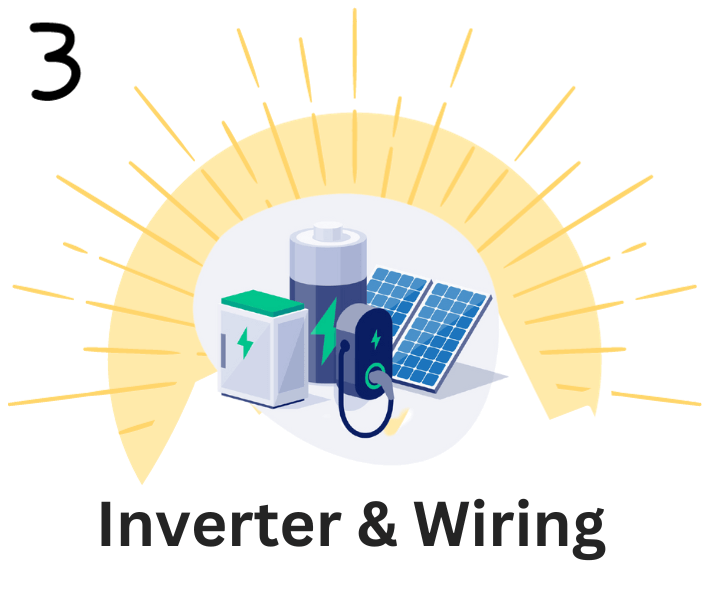
Wiring connections are made from the panels back to the inverter location. The inverter is mounted and wired to the main electrical panel.

Once everything is structurally secured, the team does testing and commissioning to activate the system. They validate power output and connection to the grid. Safety checks also ensure proper shutdown if grid power is lost. The meter is swapped out for a two-way net meter to track solar production and usage.
Regular Upkeep: Comparable to a vehicle, your solar PV panels necessitate regular upkeep. Keeping your panels clean and connections in check helps ensure they function optimally. This simple routine can prevent potential problems that may lessen the output of your system.
Monitoring at the Panel Level: It's essential to periodically monitor the performance of each solar panel. By doing so, you can identify and rectify any issues promptly, ensuring your solar PV system operates at peak efficiency.
Synchronise Your Energy Consumption: Attempt to operate your appliances and other electrical equipment during the sun's peak hours. By synchronising your energy consumption with when your panels are generating the most electricity, you can maximise the use of the energy they produce.
Optimum Positioning: Ensure your panels are oriented south and angled correctly to capture the maximum amount of sunlight throughout the year. Also, remember to remove any potential shading from growing vegetation.
Anticipate Upgrades Typically, solar panels and inverters can last for several years, often exceeding a decade. However, allocating funds for future upgrades to system components can help sustain a high output over the long term.
Be Informed About Financial Incentives: Stay updated on local incentives, such as the Smart Export Guarantee, tax credits, and rebates for solar panel installations. These can make the financial aspects of adopting renewable energy more appealing. Also, remember to review your net metering rules and rates when your contract is due for renewal.
By employing these strategies, you can save money on your electricity costs, reduce your energy consumption, and contribute to a greener future with your residential solar panels. The solar panels cost may be offset by the savings on your energy bills and the payments you receive from your energy supplier for feeding energy back into the grid.
The UK government supports these initiatives to promote the use of renewable energy across the country.
Trim any overhanging tree branches that may cause shading. Check that mounting structures remain securely attached, adjusting or reinforcing if needed. Inspect electrical connections and wires for damage while being mindful of safety.
Consider panel-level monitoring to identify underperformers. Budgeting for periodic system tune-ups and component replacement/upgrades will maintain optimal output over the decades-long lifetime of your PV system.
Staying on top of maintenance protects your investment and maximises solar savings.
The initial cost of installing solar PV installations can vary quite a bit, depending on a few factors. These include the size of your system, the equipment you choose, and the specific requirements of your site.
For a typical small-scale rooftop solar PV system (around 3-5 kW) in 2024, you're looking at shelling out somewhere between £5,000 and £8,000. The average cost per kWp for panels, an inverter, and the installation is currently around £1,500 to £2,500, fully fitted.
Now, if you're thinking bigger, like larger solar arrays or commercial systems, the price starts from £3,500 per kWp. And if your roof needs reinforcing, or you need custom mounts or a solar battery storage system, these extras will push up the overall price a bit.
While the initial cost of solar panels and equipment might seem a bit daunting, it's worth remembering that costs have fallen by over 60% in the last ten years. So, it's a much more affordable option than it used to be.
But here's the really good news. With solar incentives like the Smart Export Guarantee, the time it takes for your investment to pay off (the ROI timeline) has dropped to an average of just 5-7 years.
And if you'd rather not pay all the upfront costs, you can finance solar through a trusted provider. This can be a great way to start benefiting from solar energy without the initial outlay.
The cost of solar panels in the UK can vary greatly depending on the size of the system, type of equipment, and installation factors. Here is a breakdown of average costs:
Equipment Costs
| Item | Cost |
|---|---|
| Solar panels | £500-£800 per kWp |
| Inverter | £300-£500 per kWp |
| Mounting hardware | £100-£300 per kWp |
Installation Costs
| Factor | Cost |
|---|---|
| Basic roof or ground mount | £200-£500 per kWp |
| Complex/commercial install | £800+ per kWp |
| Battery storage add-on | £800-£1000 per kWh |
Total System Costs
| System Size | Total Cost | Cost per kWp |
|---|---|---|
| 2 kW | £3000-£5000 | £1500-£2500 |
| 5 kW | £7000-£12,000 | £1400-£2400 |
| 10 kW | £14,000-£25,000 | £1400-£2500 |
| 50 kW+ commercial | £70,000+ | £1000-£1500 |
When it comes to solar panels, higher prices often reflect higher quality components, construction, and performance. However, cost is not the only factor in determining panel quality.
Key Quality Factors Besides Price:
Efficiency - higher rates 15%+ reduce space needed.
Warranties - 25+ years for top products.
Brand Reputation - established players tend to use better materials.
Certifications - look for international standards.
Durability Testing - check hail/wind/cycling ratings.
Manufacturing Consistency - low variability in output.
Balance Price and Performance:
The most expensive panels are not always the best option. Compare warranties, efficiencies and certifications between brands across pricing tiers.
Aim for the "sweet spot" between price and quality - good value from reputable mid-range brands.
Panel Efficiency:
More efficient panels produce more energy in the same space. High efficiency panels (20%+) cost more.
Panel Brand & Quality:
Premium brands command higher prices. Quality of materials and manufacturing impacts price.
Panel Size:
Larger panels cost more but require fewer units. Economies of scale make utility-scale cheaper per watt.
Mounting/Hardware:
Ground mounts are lower cost than rooftop. Complex roofing adds expenses.
Installation Complexity:
Commercial scale systems cost more to install. Custom engineering and electrical work add cost.
Location:
Rural installs cost less than congested urban areas. London and South East have highest prices.
Supply & Demand:
Solar panel pricing is very competitive globally. Economic conditions influence supply chain costs.
Incentives & Taxes:
VAT tax impacts final pricing.

You might be wondering about the potential savings of solar panels in the UK. Here's an overview for you to find out exactly that.
Costs and Savings: The expenses and savings from solar panel installations depend on a range of factors. A typical solar panel system (around 4kW), can help households save between £300 and £400 on electricity costs per year. Larger installations on more spacious homes can save between £600 and £800 annually.
The Smart Export Guarantee: The UK government's Smart Export Guarantee offers bill credits based on your export tariff rate. A higher tariff rate can significantly impact savings, resulting in greater financial benefits.
Long-term Savings: The Bigger Picture over the 25+ year lifespan of a typical solar panel system, savings accumulate from avoiding electricity price hikes. With solar incentives and maintenance costs factored in, current ROI timeframes range around 5-7 years.
Factoring in all these elements, overall lifetime savings compared to grid electricity costs could range from £5,000 to £10,000
The Bottom Line
As of our last update, solar panel prices in the UK offer a compelling opportunity to save money and invest in renewable energy. By choosing solar installations, you're choosing a future that's brighter for both your wallet and the environment.
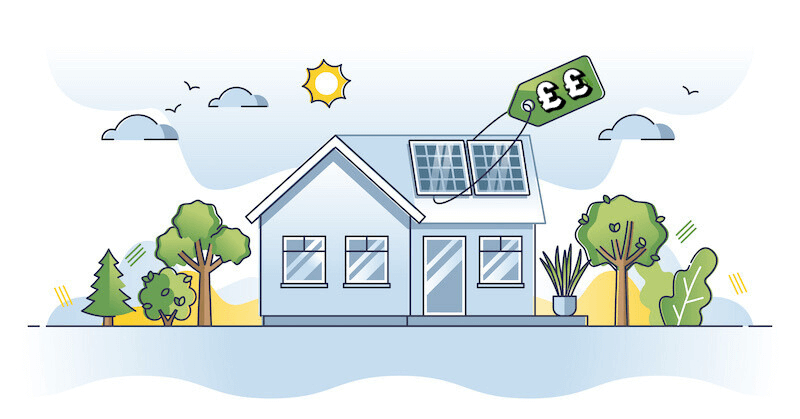
"The installation of solar panels and equipment on residential buildings and land may be 'permitted development' with no need to apply to the Local Planning Authority for planning permission.” Unbiased
Installing solar panels allows households to reduce their electricity bills by generating their own renewable power. The savings come from lower grid imports and earning income through solar export tariffs. For a typical 4 kW system, average savings range from £300-£500 per year. Larger installs can save even more annually. The table below shows potential bill reductions for different solar panel system sizes:
| System Size | Annual Bill Savings |
|---|---|
| 2 kW | £200-£300 |
| 4 kW | £300-£500 |
| 6 kW | £400-£600 |
| 10 kW | £600-£800 |
These savings will accumulate over the 25+ year lifetime of a solar PV system. With electricity prices projected to rise, solar bill reductions will grow over time and could offset over £10,000 in grid electricity costs. The key factors influencing savings are solar panel production, electricity rates, and export tariff income. Overall, solar energy can lead to substantially cheaper bills over decades.
Solar panels can be a worthwhile investment for many British homeowners and businesses with the right conditions. Key factors that improve the value proposition of solar PV in the UK include:
High and rising electricity rates make solar savings significant.
Generous export tariffs through the Smart Export Guarantee provide added revenues.
Low interest loans or financing options are available for solar installations.
ROI timelines for purchased systems now average 5-7 years.
Panels typically last 25+ years allowing decades of electricity savings.
Property values increase an average of 3-5% for solar homes.
Environmental benefits appeal to eco-conscious consumers.
The optimal solar payback depends on system size, equipment, location incentives, electricity usage and financing. Carefully evaluating these parameters for your specific situation is recommended.
For many, the long-term energy savings, income potential, property value improvements and environmental gains make solar power a worthwhile investment if financially viable based on your own circumstances.
Investing in a solar PV system can provide multiple financial benefits that improve the return on investment over time. Key financial gains include:
Electricity Bill Savings
Export Tariff Income
Avoided Price Hikes
Property Value Increase
Accelerated Depreciation
Income Streams
| Financial Benefit | 25 Year Estimate |
|---|---|
| Bill Savings | £10,000 |
| Export Income | £5,000 |
| Avoided Rate Hikes | £4,000 |
| Total Savings | £19,000 |
Adding solar PV panels can improve the value and appeal of your home or building for prospective buyers or tenants. Key property benefits include:
Increased Resale Value - Homes with solar systems sell for around 3-5% more on average as buyers value the long-term utility savings and environmental benefits. This price premium can recoup your initial investment.
Energy Efficiency Appeal - Solar power enhances the energy efficiency of your property, making it more attractive in the real estate market. Eco-conscious buyers actively look for green energy features.
Lower Bills - Tenants are drawn to properties with lower electricity costs thanks to solar power generation. This translates to higher rental income potential.
Improved Condition - Installing panels, mounts and wiring improves the overall condition of the roof. Proper weatherproofing ensures leaks are fixed.
Modernisation - Solar modernises ageing properties with cutting-edge green technology that buyers look for.
Solar can boost property value both for your own gain when selling, as well as enhancing rental income potential through energy efficiency upgrades. The value adds stack up both environmentally and financially.
"Cheaper, more efficient solar panels and the modular nature of energy production makes solar power the perfect fit for real estate, allowing the sector to evolve and embrace solar’s huge potential.” Savills
Are you considering residential solar panels? If so, it's worth exploring various UK government incentives designed to make this option more accessible. Here's a clear and easy-to-understand rundown.
The Smart Export Guarantee: This scheme rewards you for any surplus power your solar PV system generates. Instead of going to waste, this excess energy is exported, and you receive payments. It's a smart and simple way to offset the costs of your system.
The Energy Company Obligation: For low-income households, the Energy Company Obligation offers a boost. This grant scheme aims to make solar PV systems more affordable, helping to level the playing field when it comes to access to renewable energy.
Legacy Schemes: Though the Feed-in Tariff and Renewable Heat Incentive schemes are no longer open, if you were enrolled in them, your payments continue. It's an important part of the government's commitment to those who have already invested in solar thermal and other renewable technologies.
Green Grant Programmes at the Local Level: Support for solar doesn't stop at the national level. Various local councils offer green grant programmes, providing funding support for residential solar panel installations. These local initiatives contribute to wider efforts in meeting renewable energy targets.
A Brighter Tomorrow with Solar
While the specifics of grants and incentives may evolve over the years, what remains constant is the government's commitment to making solar energy an affordable and accessible choice.
Checking your eligibility for national and local solar schemes can make solar an even more financially appealing choice, helping you to reap the benefits for years to come.
Remember, when you opt for solar, you're not just saving money, but also contributing to a more sustainable future.
"The Green Deal helps you make energy-saving improvements to your home and to find the best way to pay for them.” Gov UK
The Smart Export Guarantee requires energy suppliers to pay households for excess solar electricity exported to the grid. This provides an additional revenue stream from solar PV installations.
How it Works:
Solar panels generate more power than consumed during daylight hours.
The surplus is exported back to the electricity grid.
Smart meters track both the import and export of energy.
Suppliers must pay for each kWh exported based on a tariff rate.
Tariff Rates
| Supplier | SEG Rate |
|---|---|
| British Gas | 5.5 p/kWh |
| EDF Energy | 4.5 p/kWh |
| EON | 4.0 p/kWh |
| Octopus | 7.5 p/kWh |
The SEG provides solar homes an added income stream that improves ROI on solar investments.
Some local councils offer grant schemes or initiatives to help residents and businesses install solar PV panels in their area. These may include:
Direct financial grants to cover a portion of solar panel system costs. The amount varies by council.
Low-interest green loans for solar installation and energy efficiency upgrades.
Solar Together group buying programs that use bulk purchasing to reduce solar costs.
Free solar assessments and installation support for households.
Planning and permitting assistance for larger solar projects.
Pilot schemes focused on low-income housing or community buildings.
Partnerships with local installers approved for council-backed programs.
The availability, criteria and funding for council solar grants depends on location. Some focus on households while others target public buildings. Checking solar policies on your council website is advised. Local support can make installations more affordable.
| Council | Solar Incentives |
|---|---|
| London | - Solar Together group buying scheme - Interest-free solar loans for households |
| Bristol | - Up to £2,000 grant for solar PV installs - Low-income housing retrofit scheme |
| Sheffield | - Solar PV grants for community buildings - 100% business rate relief for solar arrays |
| Kent | - Up to £10,000 solar grants for SMEs - Support for solar farms and large scale projects |
London offers group discount schemes and financing to encourage residential solar.
Bristol provides household grants and focused low-income housing programs.
Sheffield supports community building installs and offers rate relief for businesses.
Kent gives grants for companies and aids large solar development.
Several grant schemes exist to help social housing providers install solar PV systems on their properties. These include:
Social Housing Decarbonisation Fund - The social housing decarbonisation scheme provides up to £16,000 per social home to support energy efficiency upgrades including solar panel installations. Funded by BEIS.
Renewable Heat Incentive - RHI provides Ongoing payments for 20 years based on the heat energy generated from eligible solar thermal panels.
Smart Export Guarantee - Requires energy suppliers to pay for excess solar electricity exported to the grid. Provides income stream.
Local Authority Delivery Scheme - Some councils offer grants and finance to supplement housing association solar schemes.
Solar Together - Group buying scheme with discounts up to 40% off solar costs for housing associations. Funded by BEIS.
In addition, housing associations may be eligible for tax relief, low interest loans, and procurement savings when installing large scale solar across their housing portfolio. The grants and incentives can make going solar very cost effective.
The ECO scheme places requirements on UK energy suppliers to fund energy efficiency improvements in British homes, including the installation of solar photovoltaic (PV) systems.
Key features:
Targets low income and vulnerable households unable to fund upgrades.
Focused on insulating homes and heating improvements.
Also used to fund solar PV installs as part of broader retrofits.
Delivered through obligated suppliers working with installers.
Scheme phases ran from 2013-2022 with various funding pots.
£640 million allocated in ECO3 phase for renewable technology.
Suppliers meet targets through green subsidy charges on consumer bills.
While not exclusively for solar, ECO has facilitated thousands of low-income household solar installations over the years through energy supplier obligations and funding.
The FiT program launched in 2010 and closed to new applicants in April 2019.
It provided generation tariffs for each kWh of renewable electricity produced by solar PV systems.
Additional export tariffs were paid for surplus power exported back to the grid.
Tariff rates varied by system size, date of installation, and energy inflation.
FiT payments were guaranteed for systems registered before the 2019 deadline.
Over 800,000 solar installations benefited from FiT incentives.
The scheme helped drive huge growth in UK residential solar adoption.
Systems registered before closure can still receive FiT payments for 20 years.
The Smart Export Guarantee has now replaced FiT export tariff benefits.
While closed to new applicants, the FiT scheme created a foundation for sustainable solar growth in the UK that persists through grandfathered installations still receiving payments today.
The domestic RHI launched in 2014 to incentivise household renewable heat.
Eligible solar thermal systems received quarterly tariff payments for 20 years.
Tariffs were 7.42p/kWh for systems installed after April 2019.
Over 23,000 UK homes benefitted from domestic RHI incentives.
The scheme helped drive adoption of household solar hot water.
It closed to new applications in March 2022.
Homeowners who registered before closure still get 20 years of RHI payments.
These legacy solar thermal systems will receive tariffs until March 2028.
New domestic schemes like the Boiler Upgrade Scheme replace the RHI.
While now ended for new applicants, the domestic RHI supported the growth of residential solar thermal through two decades of guaranteed incentives for systems registered before March 2022.
The Green Homes Grant launched in September 2020 and closed in March 2021.
It was a UK government voucher scheme to help households install energy efficient improvements.
Solar PV systems were eligible technologies supported under the grant.
Vouchers covered two-thirds of the install costs up to £5,000 for low-income homes.
For other households, vouchers covered one-third of costs up to £10,000.
The scheme had a budget of £1.5 billion but was plagued by bureaucratic issues.
Only around £314 million was allocated before being closed early due to low uptake.
Around 100,000 vouchers were issued through the short-lived program.
Very few solar PV systems were actually installed through the Green Homes Grant scheme.
While well-intentioned, poor execution meant the UK policy failed to drive adoption of solar panels and other green upgrades as planned.

We've put together a handy checklist to guide you through the process of finding the best solar panel installer. From verifying certifications and checking online reviews, right through to ensuring a proper written contract, our checklist covers all the important points.
🔲 Verify MCS certification for installers, which meets quality standards for solar projects.
🔲 Look for installers partnered with reputable equipment manufacturers and suppliers.
🔲 Check online reviews on sites like Trustpilot to see customer feedback.
🔲 Get recommendations from friends, family, or neighbours with solar.
🔲 Ask about experience with systems similar to yours (e.g. rooftop or ground mount).
🔲 Inquire about post-install support, warranties, maintenance and monitoring.
🔲 Select a local company familiar with regulations, permits, and incentives in your area.
🔲 Ask detailed questions and have them conduct a site survey.
🔲 Check credentials for engineers and electricians doing the installation.
🔲 Verify they will obtain all required building permits and planning consent.
🔲 Make sure they use quality components from reliable brands.
🔲 Get everything agreed to in a written contract before work begins.
By following this checklist, you'll be well on your way to finding a qualified, reputable installer for your solar panels in the UK.
The Microgeneration Certification Scheme (MCS) is an industry standard that solar panel installers must meet to demonstrate their competence.
MCS certification requires installers to undergo training, have proven expertise, hold professional qualifications, carry correct insurances, and install equipment that meets set standards.
MCS accredited installers must follow strict regulations and quality procedures for each installation.
They are regularly audited to verify ongoing compliance. Homeowners should always check for MCS certification when choosing a solar installer, as this validates they have met stringent criteria.
The MCS quality mark offers assurance that the installer will deliver a compliant, safe and properly functioning solar system.
| Month | New MCS Certified Contractors | MCS Certified Installations |
|---|---|---|
| Jan 2022 | 9 | 6,003 |
| Feb 2022 | 27 | 7,448 |
| Mar 2022 | 30 | 10,022 |
| Apr 2022 | 19 | 9,792 |
| May 2022 | 38 | 11,002 |
| Jun 2022 | 36 | 11,387 |
| Jul 2022 | 35 | 11,143 |
| Aug 2022 | 51 | 12,299 |
| Sep 2022 | 61 | 14,440 |
| Oct 2022 | 94 | 14,186 |
| Nov 2022 | 91 | 16,205 |
| Dec 2022 | 78 | 12,217 |
| Jan 2023 | 99 | 16,376 |
| Feb 2023 | 90 | 17,486 |
| Mar 2023 | 143 | 18,086 |
| Apr 2023 | 95 | 15,760 |
| May 2023 | 111 | 16,236 |
| Jun 2023 | 85 | 17,914 |
| Jul 2023 | 142 | 15,250 |
| Aug 2023 | 111 | 15,286 |
| Sep 2023 | 68 | 11,168 |
Most homes require 20-40 panels to offset a majority of their electricity use. For example, a 2,000 sq ft house that consumes 10,000 kWh/year would need around 30 panels with 300W capacity to generate 80-90% of its energy.
Homes with electric vehicles or heat pumps may need 50+ panels. Smaller roofs may fit 12-15 panels to provide 30-40% of power.
The 20% rule states that your solar array's total wattage should be around 20% of your home's average energy usage. For example, if your household uses 10,000 kWh of electricity per year, then your system should be around 2,000 Watts (10,000 kWh x 0.2).
This percentage allows your solar panels to offset a sizable portion of your home's energy needs without overproducing excess unused power.
Most homes are well-suited to have panel strength ranging from 250-400 watts. Higher watt panels generate more electricity but require more roof area. For small to mid-sized households, panels around 300W provide an ideal balance of productivity and space efficiency.
In the UK, buying solar panels can be a smart investment for many homeowners. The benefits include:
Generating your own renewable electricity to offset high energy bills.
Typical savings of £200-£300 per year on electricity costs.
Additional income from government incentives like the Smart Export Guarantee.
Increased property value by adding a solar system.
Lower carbon footprint from running your home on green power.
Return on investment within 7-10 years in most cases.
The average cost for 1 solar photovoltaic panel in the UK is £150-£350 per panel.
Standard panels sized around 1.7m x 1m with power output of 330-400W tend to cost £200-£300 each.
High efficiency or premium brand panels can run £300-£350. Lower wattage or smaller panels may cost as little as £150-£180.
A 4.8 kW solar system in the UK costs between £5,000 - £8,000 installed.
For a system around this size, you would usually need 16 panels rated at 300 watts each. At roughly £200 per 300W panel, the panels themselves would cost about £3,200.
Adding a 4kW solar inverter at around £500, mounting hardware, cables and other electrical accessories takes the equipment total to approximately £4,000-£5,000.
Installation, scaffolding, permits and labor typically adds another £1,000-£3,000. Roof type, accessibility and your location influences install costs.